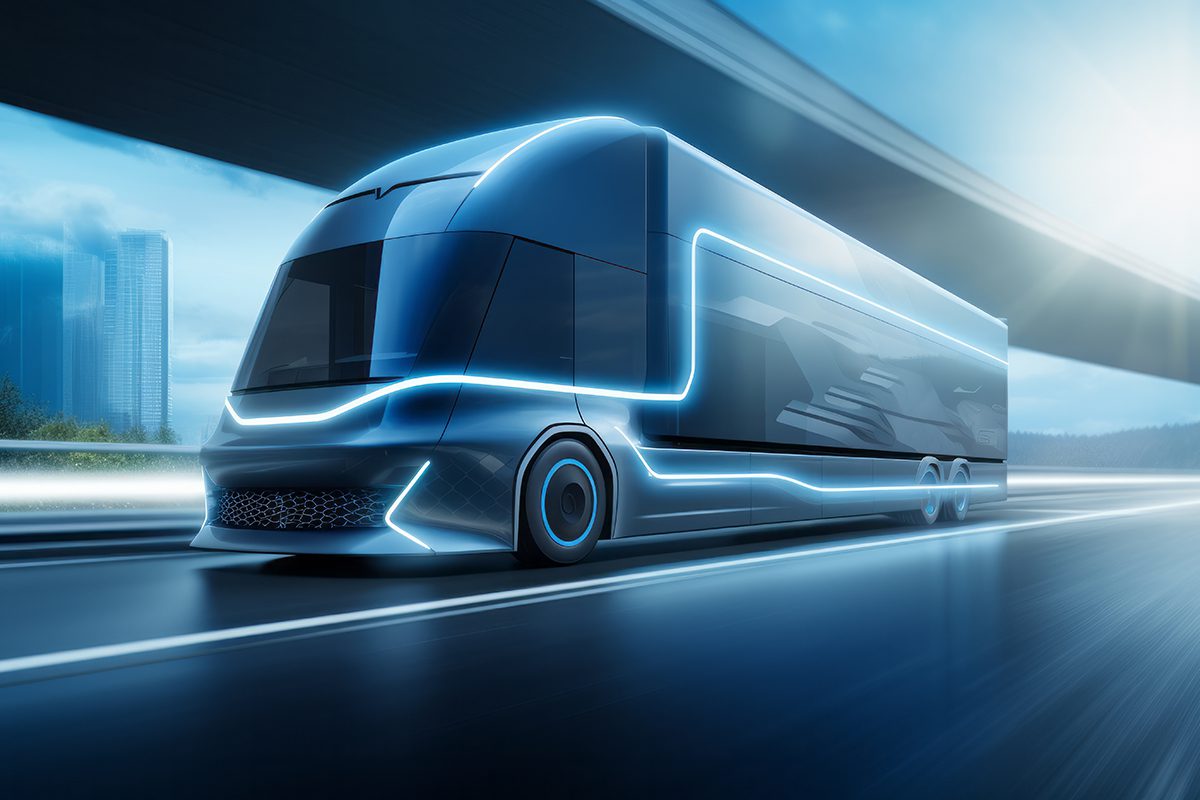Dive into the roots of the Advanced Clean Trucks (ACT) rule and you’ll find a response to escalating concerns regarding the adverse environmental impacts from the goods movement. Originating in California from a need to curb air pollution and reduce greenhouse gas emissions, this regulatory initiative emerged as a pivotal strategy to decarbonize and reduce the environmental footprint of the trucking industry.
The ACT rule aims to transition medium- and heavy-duty vehicles from Class 2b to Class 8 to zero-emission models, backed by a comprehensive framework that includes manufacturer sales requirements and reporting mandates for large employers and fleet owners. Developed by the California Air Resources Board (CARB) and approved by the U.S. Environmental Protection Agency (EPA), the rule signals a strategic move to address the environmental impact of heavy-duty trucks. It aligns with broader goals of decreasing the transportation sector’s contribution to overall emissions and catalyzing the adoption of cleaner technologies in the trucking industry.
California’s adoption of the zero-emission truck sales mandate quickly mobilized other states to follow suit. In 2020, 15 states and the District of Columbia signed a Multi-State Medium- and Heavy-Duty Zero-Emission Vehicle Memorandum of Understanding (MOU) to align states with the goals of the ACT rule. This commitment aims to speed up the adoption of zero-emission vehicles (ZEVs) in the medium- and heavy-duty trucking sectors, fostering innovation and addressing environmental concerns.
Participating states have pledged collaborative efforts with industry stakeholders to develop programs promoting the integration of ZEVs into their fleets. The original signatories include California, Colorado, Connecticut, Hawaii, Maine, Maryland, Massachusetts, New Jersey, New York, North Carolina, Oregon, Pennsylvania, Rhode Island, Vermont, Washington, and the District of Columbia. Since the creation of the MOU, Nevada, Virginia, and the Province of Quebec in Canada have also signed on. The goal is to enhance the availability of clean transportation options, creating a market environment that supports the development and adoption of zero-emission technologies. The MOU emphasizes the establishment of guiding principles and action plans, outlining specific targets and strategies for integrating ZEVs. This reflects a shared vision among participating states, prioritizing decarbonization and sustainability in the transportation sector.
Navigating the intricate landscape of state commitments and environmental regulations, the journey of the ACT rule unfolded with complex and shifting political dynamics. As states take the lead in embracing climate protection through the adoption of the ACT rule, a transformative ripple effect has occurred. Since its passage in California in 2020, ten other states have actively embraced the regulation – Colorado, Maryland, Massachusetts, New Jersey, New Mexico, New York, Oregon, Rhode Island, Vermont, and Washington.
However, 2023 introduced a significant twist in this narrative. Not only did it mark the initial instance where states beyond the MOU framework began adopting or proposing the ACT rule, as seen in New Mexico and Illinois, but it also witnessed unexpected retreats from the effort. For the first time, states previously committed to the MOU chose not to adopt the ACT rule. This dual occurrence in 2023 reflects a dynamic evolution in the approaches taken by states in addressing emissions from medium- and heavy-duty vehicles.
This shift is exemplified by the experiences of individual states like Connecticut, which, after years of legislative and regulatory processes, was on the brink of adopting ACT. Yet, on the eve of the critical Regulations Review Committee meeting, Governor Ned Lamont withdrew the regulation due to concerns of bipartisan dissent. Similarly, Maine and North Carolina, faced with their own unique challenges, stepped back from adopting the regulation in the same year. North Carolina’s bipartisan opposition materialized through House Bill 259, prohibiting the adoption of the ACT rule and any future equivalent regulations. In Maine, regulators cited concerns over heavy-duty vehicle charging station availability and the high cost of zero-emission trucks when announcing their decision not to advance the rule.
This nuanced interplay of decisions and withdrawals underscores the intricate politics and multifaceted nature of the decision-making process surrounding stringent environmental regulations. Despite these individual setbacks, the ACT rule remains a dominant topic in the debate over how to respond to a rapidly changing planet. As states continue to traverse this uncertain landscape, the future trajectory of environmental regulations in the trucking industry remains dynamic and warrants close observation. Ongoing developments and decisions will undoubtedly shape the evolving narrative of sustainable and cleaner transportation practices.
TRC’s Policy 360 program will continue monitoring these developments and report to our clients on new and emerging legislative and regulatory policies to promote, or restrict, clean transportation technology and infrastructure. For more information, please reach out to the Policy 360 group.



